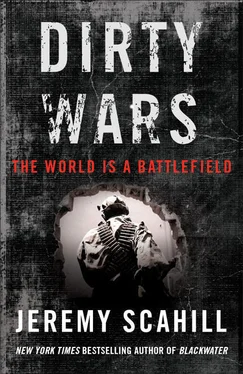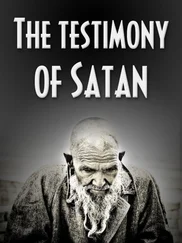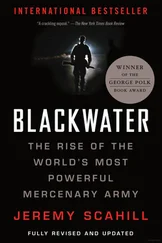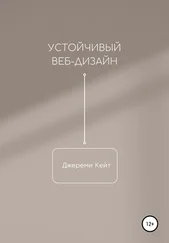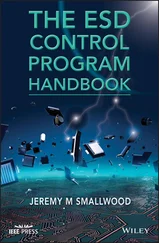At Camp David, Shelton said, Wolfowitz continued to press for an Iraq attack even as Shelton, Powell and senior intelligence officials said there was no evidence to suggest Iraq had anything to do with the attacks. As discussion focused on Afghanistan and attacking al Qaeda’s sanctuary, “True to form, Wolfowitz brought it up: ‘We need to be using this as a reason to attack Iraq,’” Shelton recalled. Dr. Emile Nakhleh, a senior CIA analyst at the time, was also briefing the president during the immediate post-9/11 period. Nakhleh had been with the Agency for a decade and had spent much of it traveling under academic cover in Muslim countries across the globe. Having started the CIA’s Political Islam Strategic Analysis Program and as its scholar-in-residence on militant Islamist movements and Middle Eastern governments, he was the Agency’s equivalent of a three-star general. In response to Rumsfeld and Wolfowitz pushing for an invasion of Iraq in those first meetings, Nakhleh told me, he stood up at one point and said to them, “If you want to go after that son of a bitch [Saddam] to settle all scores, be my guest, but we have no information that Saddam was tied to al Qaeda or to terrorism and we have no clear information” about weapons of mass destruction (WMD). Nakhleh said, after the first several meetings post-9/11, “my conclusion and other analysts’ conclusion was they were going to go to war. The train had left the station, regardless of the intelligence we presented.” President Bush shelved the Iraq discussions for a time, having pledged as a candidate not to engage in “nation building.” He said he wanted a “humble” foreign policy. But his views were rapidly evolving.
It would take some time—and more than a dozen visits to the CIA by Cheney and his chief of staff, “Scooter” Libby—to produce enough “evidence” of an active Iraqi WMD program to pull off their plans for an Iraq invasion. But, in the meantime, they had a war against government oversight and accountability to wage. The CIA and Special Forces campaign in Afghanistan was, in the beginning, a rout. While the Afghanistan war was producing spectacular headlines trumpeting the swiftness and decisiveness of the US military campaign against the weak Taliban government, Cheney and Rumsfeld and their neoconservative deputies were busy plotting a global war. This war would extend to the home front with warrantless wiretapping, mass arrests of Arabs, Pakistanis and other Muslim immigrants and a prodigious rollback of the civil liberties of American citizens. To wage it, they would have to dismantle and manipulate a bureaucracy of oversight and legal review that had been built up over successive administrations. All this would open the door for an array of tactics that had been used before but could now be deployed on an unprecedented scale: covert action, black ops, secret prisons, snatch operations and what amounted to a blanket rebranding of assassinations as “High Value Targeting.”
COMING OUT OF THE REAGAN-BUSH ERA, in which the institution of covert action was marred by the Iran-Contra scandal, President Clinton put in place more oversight mechanisms and created a rigorous legal system for approving lethal covert action. When Clinton or his national security adviser proposed a covert action, it would be passed through an internal oversight system: first to the CIA, where the Agency’s general counsel would review its legality before passing it on for further review (and possibly proposed changes as a result of the legal review) to two separate CIA committees—the Covert Action Planning Group and the Covert Action Review Group. After those committees reviewed the proposed action and suggested alterations, it would go back to the CIA’s general counsel for a final legal review and then would be passed back to the White House. There, it would be put before the Interagency Working Group for Covert Action, comprising representatives from various agencies within the executive branch. The group would analyze the potential consequences of the proposed covert action and, again, review its legality. After a final review by the heads and deputies of the relevant agencies, the action would be presented to the president for authorization. These actions were rarely approved.
When President Bush was sworn in early in 2001, his administration indicated it intended to keep many of those same checks and balances in place. National Security Presidential Directive-1 (NSPD-1), signed by Bush on February 13, 2001, closely mirrored the Clinton-era system for approving covert actions. But in March, Bush asked National Security Adviser Condoleezza Rice to request that the CIA “prepare a new series of authorities for covert action in Afghanistan.” Clarke and his CIA counterparts who ran the “bin Laden Unit” began laying out covert actions that could target al Qaeda, while the administration proposed beefing up the CIA’s counterterrorism funding. Clarke pushed hard for a retaliatory strike against al Qaeda for the October 2000 bombing of the USS Cole off the coast of Yemen. As was the case under Clinton, many of the plans involved targeting al Qaeda leadership in Afghanistan. At the end of May, Rice and Tenet met with Clarke, Cofer Black and the bin Laden Unit chief to discuss “taking the offensive” against al Qaeda. The CIA was running disruption activities against bin Laden at the time, but the consensus of these officials was that they needed a plan for “breaking the back” of al Qaeda. They also endorsed covert aid to Uzbekistan but stopped short of offering any significant support to the Northern Alliance and other anti-Taliban groups inside Afghanistan. In other words, they were continuing the Clinton-era approach to al Qaeda and Afghanistan, albeit with increased funding and focus.
A draft of a new Counterterrorism National Security Presidential Directive (NSPD) was circulated in June. Deputy National Security Adviser Stephen Hadley described the program to the 9/11 Commission as “admittedly ambitious,” outlining a multiyear effort involving “all instruments of national power,” including a far-reaching covert action program. But it would go through five more meetings at the deputy level before being presented to the principals. At one of these meetings, in August 2001, the NSC Deputies Committee had “concluded that it was legal for the CIA to kill bin Laden or one of his deputies” with a Predator drone strike.
Although the use of drones would eventually become one of the staples of the US targeted killing apparatus, before 9/11 there was great dissension on the topic in the ranks of Bush’s counterterrorism team. In the last year of the Clinton administration, the United States began flying drones over Afghanistan out of a secret US base, called K2, in Uzbekistan. There was a program to create a weaponized drone under way, but it was not yet operational. Cofer Black argued that the drones should not even be used for reconnaissance, suggesting that the administration wait until they could be weaponized. He pointed out that a Predator had been spotted over Afghan territory in 2000, spurring the Taliban government to scramble MiG fighters. “I do not believe the possible recon value outweighs the risk of possible program termination when the stakes are raised by the Taliban parading a charred Predator in front of CNN,” Black asserted. In the end, the administration decided to shelve the use of the drones for recon in Afghanistan until they could be loaded for strikes. But while Black, Clarke and others within the counterterrorism team pushed hard for the eventual use of the Predators to conduct targeted killing operations, the CIA’s senior leadership expressed serious concerns about the Agency running such a program, echoing many of the concerns of the Clinton-era counterterrorism team about creating US hit lists. According to the 9/11 Commission, Tenet “in particular questioned whether he, as Director of Central Intelligence, should operate an armed Predator. ‘This was new ground,’ he told us. Tenet ticked off key questions: What is the chain of command? Who takes the shot? Are America’s leaders comfortable with the CIA doing this, going outside of normal military command and control?” Charles Allen, who was the CIA’s assistant director for collection from 1998 to 2005, said that he and the Agency’s number-three man, A. B. “Buzzy” Krongard, “had said that either one of them would be happy to pull the trigger, but Tenet was appalled,” adding that no CIA personnel had such authority to use drones to summarily assassinate people, even terrorists.
Читать дальше
